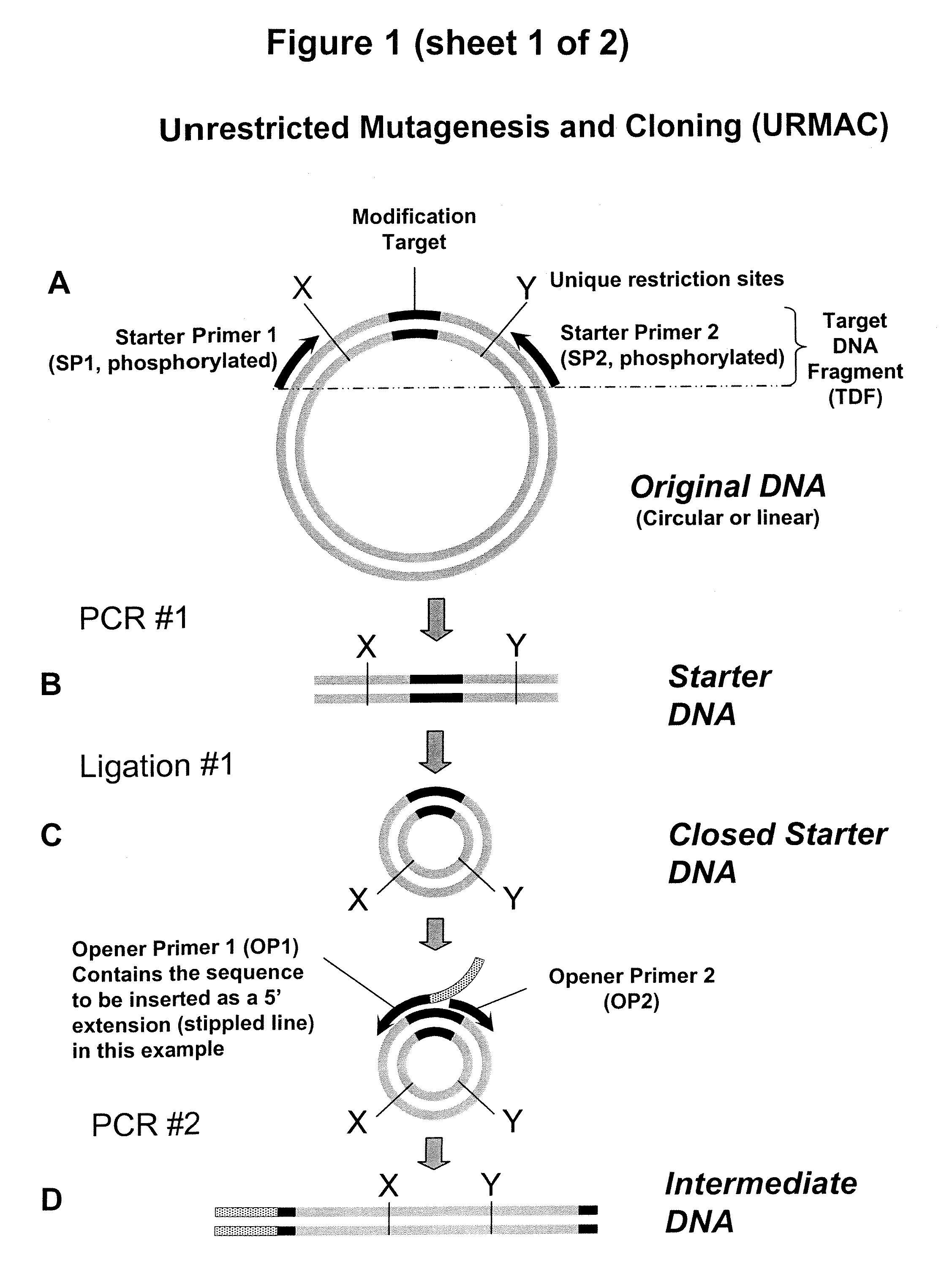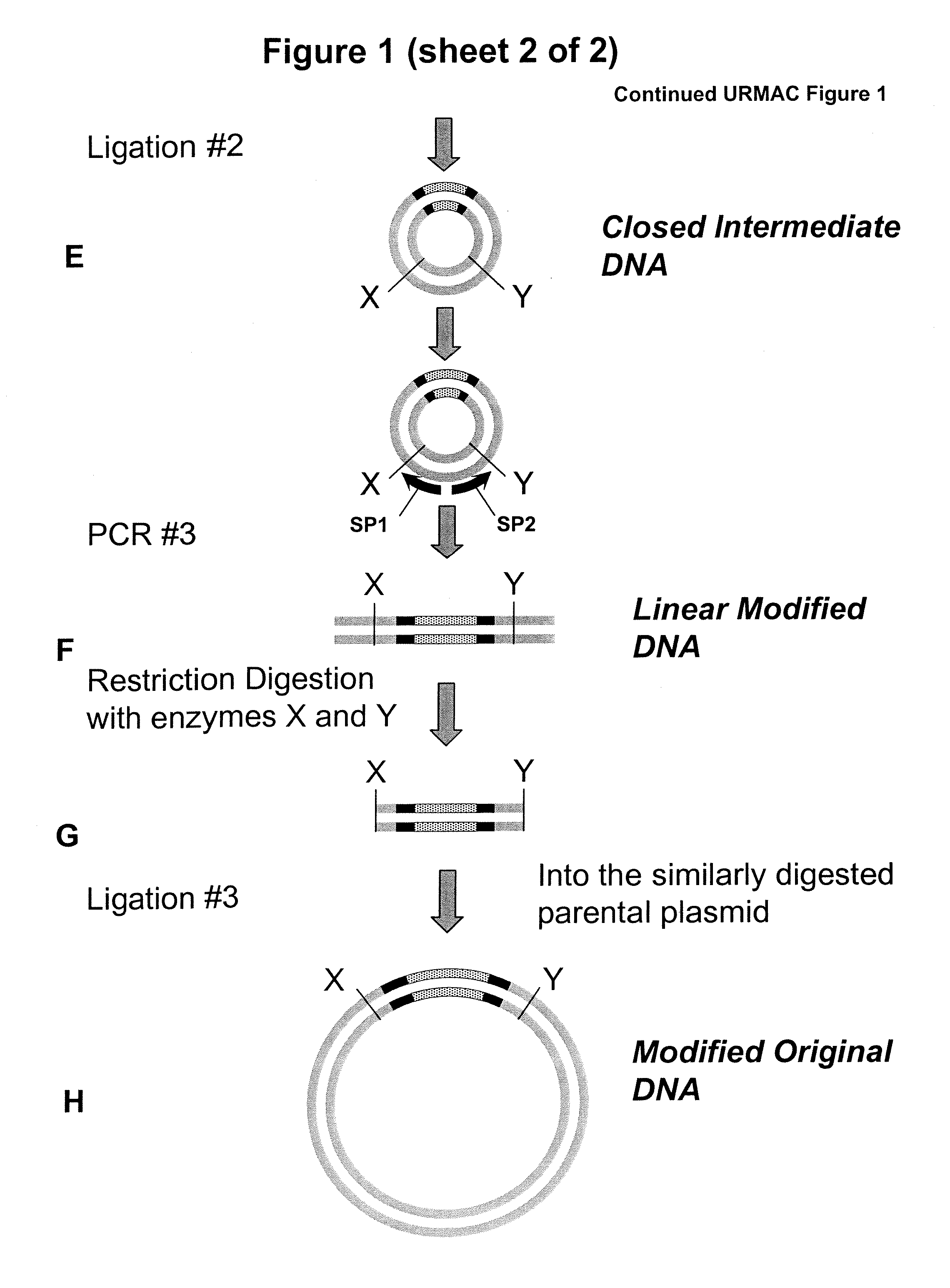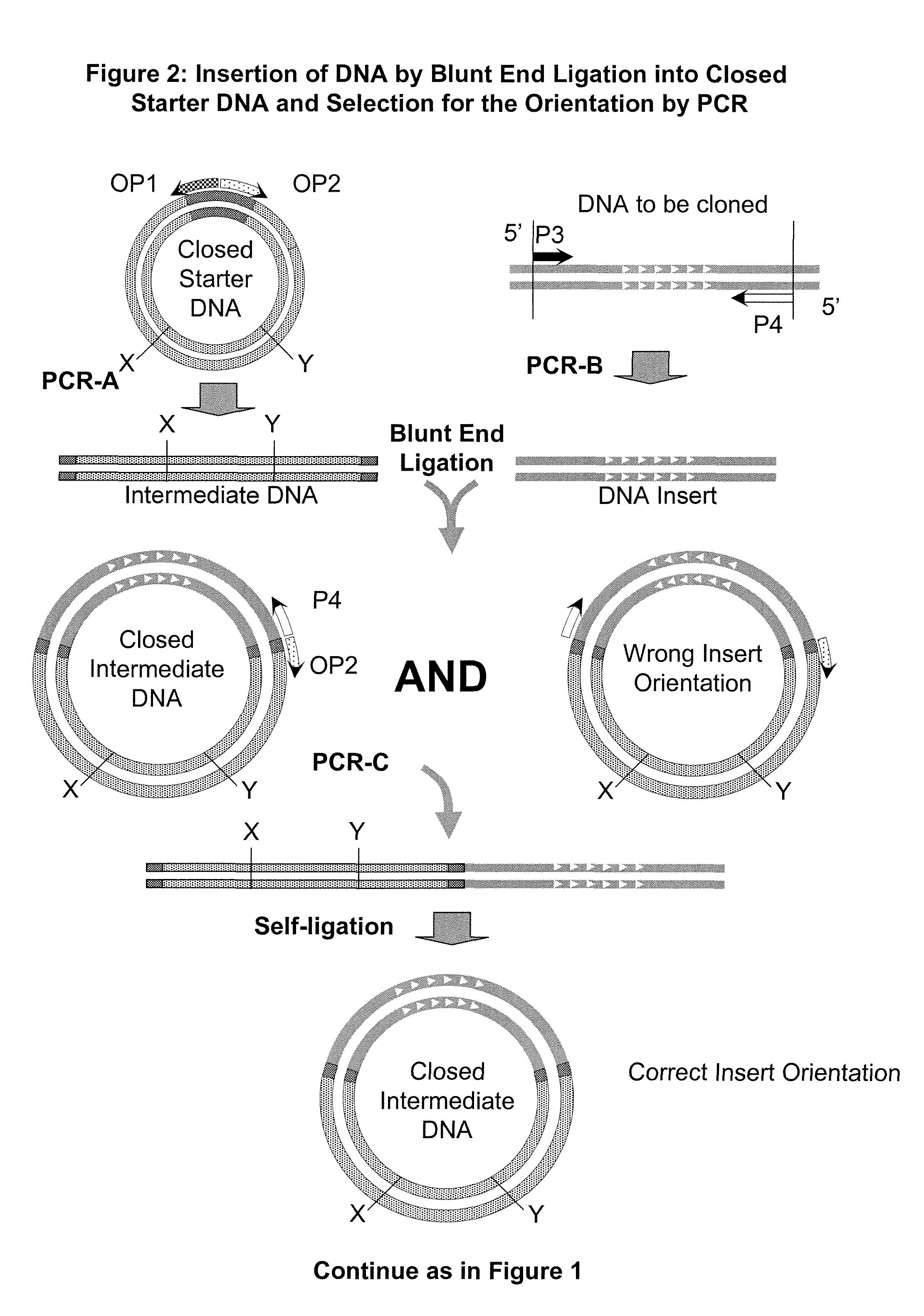Unrestricted mutagenesis and cloning methods
a technology of deoxyribonucleic acid and mutagenesis, which is applied in the field of amplifying, modifying, mutating and cloning methods of deoxyribonucleic acid, can solve the problems of difficult similar manipulation in larger plasmids (>5-8 kbp), and achieves rapid mutagenesis, easy insertion, deletion or substitution of dna sequences, and rapid mutagenesis.
- Summary
- Abstract
- Description
- Claims
- Application Information
AI Technical Summary
Benefits of technology
Problems solved by technology
Method used
Image
Examples
example 1
Deletion of Two Open Reading Frames from a Large Plasmid Using URMAC
[0091]Human respiratory syncytial virus (RSV) is a negative strand RNA virus for which a complete genomic cDNA clone has been assembled and inserted into the plasmid pBR322 (Collins et al. Proc Natl Acad Sci USA 92(25): 11563-7, 1995). The RSV cDNA can be manipulated to add, delete, or mutate genes. Infectious RSV can then be “rescued” from this genomic cDNA as a self-replicating RNA virus in cultured cells. To accomplish this rescue, cells were transfected with the genomic plasmid and 4 other plasmids that produce the 4 RSV proteins needed for RSV replication. T7 polymerase provided by another virus or plasmid drives transcription of the RSV genomic RNA and of the mRNA for the 4 RSV proteins. Once translated, these 4 proteins support the initial rounds of RSV replication, after which the virus produces its own mRNA and proteins (Collins et a., supra.; Techaarpornkul et al., J Virol, 75:6825-34, 2001).
[0092]A modifi...
example 2
Nucleotide Deletion, Substitution and Insertion by URMAC
[0104]FIG. 7A-B sets out results of three URMAC experiments which respectively deleted, substituted or inserted nucleotides in the Modification Target of pUC18 plasmid, followed by verification of the three URMAC results by restriction digestion. These protocols are also set out at the end of this example. In these Experiments (FIG. 7A, upper panel), URMAC Starter DNA was generated during the first PCR (PCR #1) reaction. This reaction contained: Template: 1 μl (100 pg) pUC18 plasmid, Primers: 1.5 μl total (75 pmol of each “Starter Primer”), thermostable DNA polymerase and corresponding PCR buffer mix: 22.5 μl, in a total reaction volume of 25 μl. One μl of the PCR product was loaded on 1% agarose gel and stained with ethidium bromide (5 ng / ml). The results are shown in FIG. 7A, upper panel. The Starter DNA was self-circularized in a ligation reaction (first ligation reaction). The ligation reaction contained: Starter DNA 1 μl f...
example 3
URMAC Using OIL Starting Primers
[0168]A version of URMAC was carried out using primers named “Oligo Instead of Ligation” (OIL) primers. The OIL primers do not need to be phosphorylated and the number of thermocycles can be significantly reduced for the first PCR from 20-30 cycles to only 10 cycles. When the primers are used, no ligation is required between the first and second URMAC PCR reactions. For the second PCR reaction, the Opener Primers are added directly to the first PCR reaction, or to a small portion of the first PCR reaction, and the second PCR reaction is performed for an additional 20-30 cycles. The Opener Primers do not serve to “open” any DNA because their template is already linear. During the second PCR reaction the Opener Primers are extended and one half of the Starter DNA is amplified from each, terminating with a copy of the 5′ OIL extension added to the Starter Primers in the first PCR. The 3′ termini of these product molecules can then hybridize and extend, c...
PUM
| Property | Measurement | Unit |
|---|---|---|
| temperature | aaaaa | aaaaa |
| temperature | aaaaa | aaaaa |
| temperature | aaaaa | aaaaa |
Abstract
Description
Claims
Application Information
 Login to View More
Login to View More - R&D
- Intellectual Property
- Life Sciences
- Materials
- Tech Scout
- Unparalleled Data Quality
- Higher Quality Content
- 60% Fewer Hallucinations
Browse by: Latest US Patents, China's latest patents, Technical Efficacy Thesaurus, Application Domain, Technology Topic, Popular Technical Reports.
© 2025 PatSnap. All rights reserved.Legal|Privacy policy|Modern Slavery Act Transparency Statement|Sitemap|About US| Contact US: help@patsnap.com



